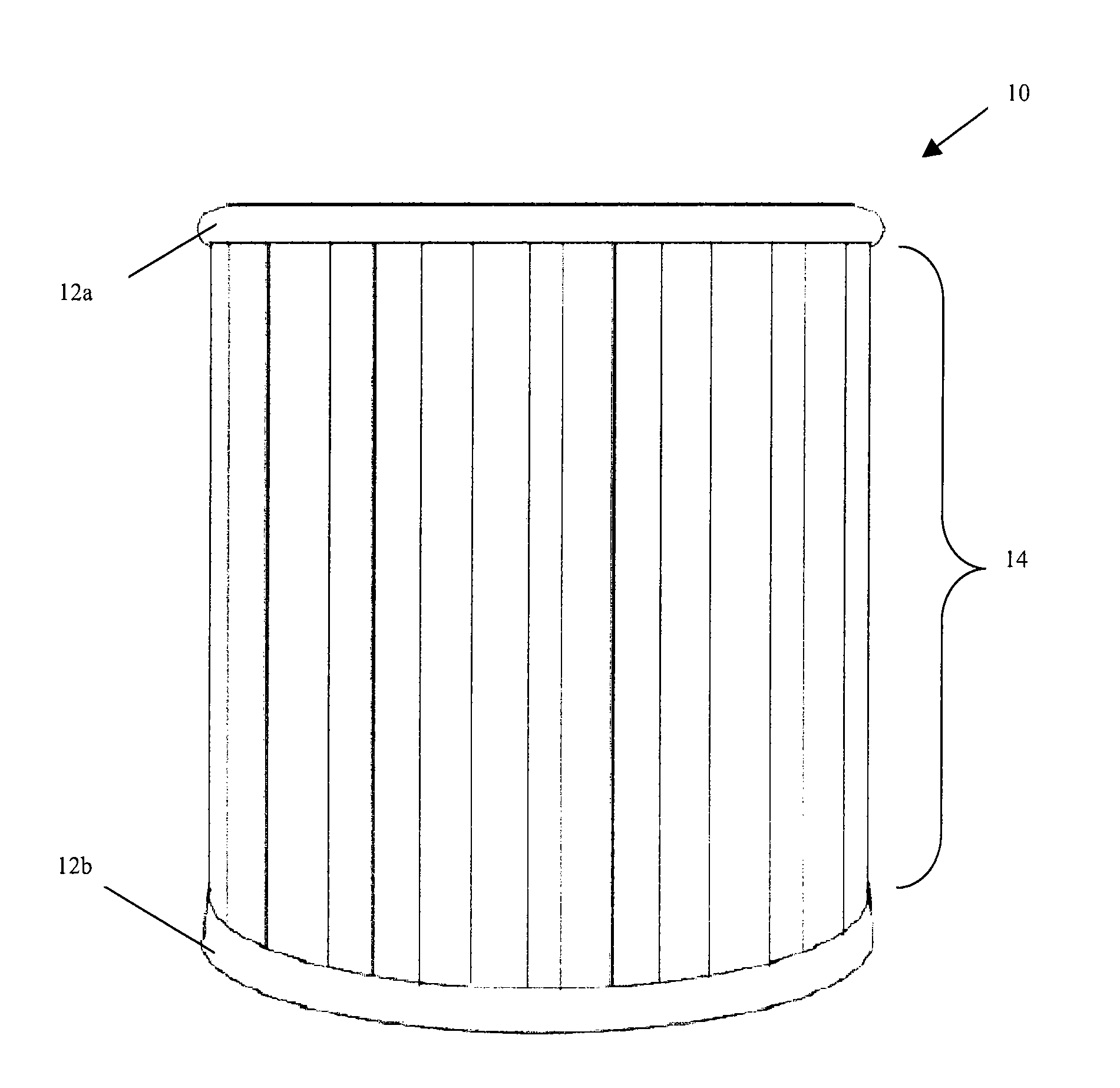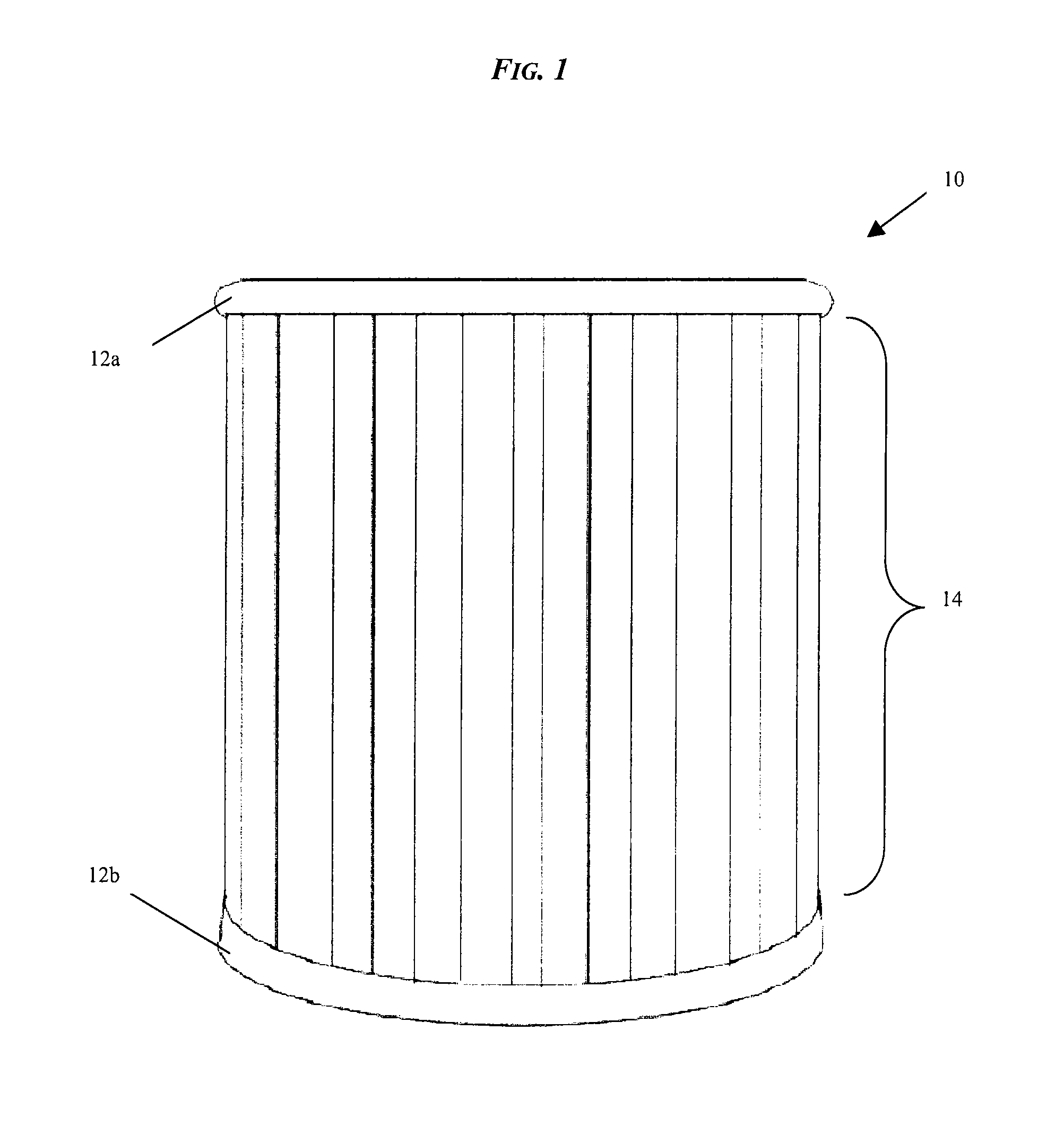High Capacity Filter Medium
a filter medium and high-capacity technology, applied in the field of air filters, can solve the problems of poor strength characteristics of media, low production rate of fibers, poor pleatability or moldability of sheets,
- Summary
- Abstract
- Description
- Claims
- Application Information
AI Technical Summary
Benefits of technology
Problems solved by technology
Method used
Image
Examples
example 1
[0036] A filter media was made on a Marketing Technology Services Greyline Airlaid Pilot line using a DanWeb drum airlaid system. Three forming heads were used to lay down three different fiber blends. All synthetic fibers were 6 mm long for processing in the DanWeb system. Top layer was 40 g / m2 and was made of a blend of 75% Wellman 15 denier polyester staple (or non-binder) fiber and 25% of Trevira 1.5 denier Type 255 binder fiber, which has a polyester core and polyethylene sheath with a melting point of 130° C. The middle layer was 40 g / m2 and was made with a blend of 75% Wellman 6 denier polyester staple fiber and 25% Trevira 1.5 denier Type 255 binder fiber. The bottom layer was 100 g / m2 and was made with a blend of 50% Wellman 0.8 denier polyester staple fiber and 50% Trevira 1.5 denier Type 255 binder fiber. After forming the layers, the entire web was thermally bonded by passing the web through an air-through oven at 140° C. The web was then foam saturated to a dry saturant...
example 2
[0037] A second filter media was made similar to Example 1 except a single fiber blend was run through the three forming heads. A total web weight of 180 g / m2 was made with 15% Wellman 15 denier polyester staple fiber, 15% Wellman 6 denier polyester staple fiber, 30% Wellman 0.8 denier staple fiber, and 40% Trevira 1.5 denier Type 255 binder fiber. The web was bonded in an air-through oven under same conditions as Example 1 and foam saturated to a dry saturant content of 23.8% with Dur-O-Set C310 polyvinyl acetate latex saturant. The Gurley stiffness before saturation was 400 mg and after saturation was 2800 mg.
example 3
[0038] A third filter media was made with the same three layers of fibers and the same equipment as Example 1 except the bottom layer was heavier at 120 g / m2. This bonded web was saturated by the same method as Sample 1 to a dry saturant content of 28.1%. The Gurley stiffness before saturation was 1240 mg and after saturation was 7700 mg.
PUM
| Property | Measurement | Unit |
|---|---|---|
| Length | aaaaa | aaaaa |
| Length | aaaaa | aaaaa |
| Length | aaaaa | aaaaa |
Abstract
Description
Claims
Application Information
 Login to View More
Login to View More - R&D
- Intellectual Property
- Life Sciences
- Materials
- Tech Scout
- Unparalleled Data Quality
- Higher Quality Content
- 60% Fewer Hallucinations
Browse by: Latest US Patents, China's latest patents, Technical Efficacy Thesaurus, Application Domain, Technology Topic, Popular Technical Reports.
© 2025 PatSnap. All rights reserved.Legal|Privacy policy|Modern Slavery Act Transparency Statement|Sitemap|About US| Contact US: help@patsnap.com


